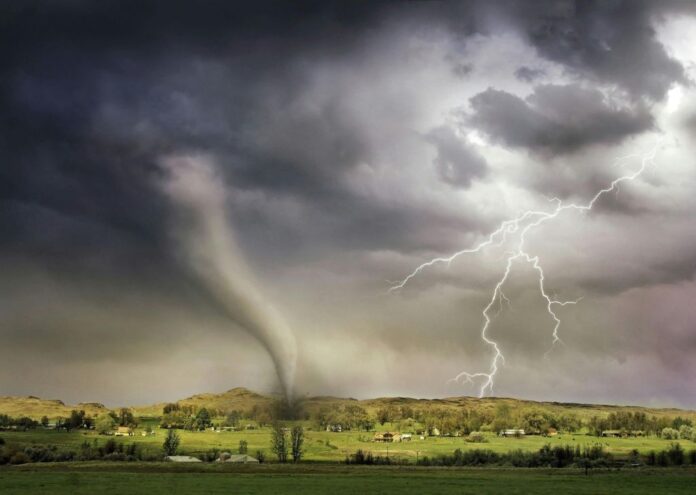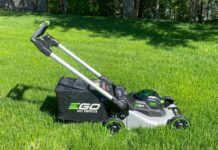March through June is known as “tornado season” in the U.S. especially in “tornado alley”. While this season does bring on amazing storms for us storm watchers, tornadoes are a serious threat that can cause property damage, bodily injury, and even death. It’s important to take tornadoes seriously and be prepared. So we put together TIA’s 5 Tornado Safety Tips to keep you, your family and your home as safe as possible this tornado season.
Tornado Safety Tips
- Know Conditions
- Understand Weather Alerts
- Have a Safety Plan
- Pack an Emergency Kit
- Invest in Back-up Power
Tornado Safety Tip #1: Know Tornado Conditions
The #1 way to protect you, your family and your home from tornadoes is to understand the weather conditions that create a tornado.
“What are tornado weather conditions?”
Tornadoes occur in thunderstorm-like conditions when hot/warm and moist air hits a cold front. Spring is commonly referred to as “tornado season” due to its favorable tornado conditions, but tornadoes can happen any time of year.
Still, it is best to be on alert for tornadoes March through June.
Tornado Safety Tip #2: Understand Tornado Weather Alerts & Grades
A great way to stay safe from tornadoes is to understand the different weather alerts. I get it, the names are similar and it gets confusing. But knowing the difference between “Tornado Watch” and “Tornado Warning” and understanding the different grades of tornadoes allows you to understand the threat level and can determine what to do next.
“What are tornado weather alerts & grades?”
- Tornado Watch: Conditions are favorable for a Tornado.
- Tornado Warning: A Tornado has been spotted. Take shelter immediately.
- EF-0: Winds range from 65-85 MPH. “Minor” damage suspected, such as lost shingles or gutter/siding damage.
- EF-1: Winds range from 86-110 MPH. Increase likelihood of “moderate” damage, such as roof damage, broken doors and windows. Mobile home residents need to seek shelter.
- EF-2: Winds range from 111-135 MPH. Likelihood of “considerable” damage to traditional homes, such as foundation shifting. Expect tree damage and uprooting.
- EF-3: Winds range from 136-165 MPH. “Severe” damage is likely for both homes and buildings. Evacuation recommended.
- EF-4: Winds range from 166-200 MPH. “Extreme” damage to homes, buildings, and landscapes. Winds can throw cars and machinery.
- EF-5: Wind speeds greater than 200 MPH. Traditional homes are decimated, severe damage to buildings and structures, trees and foliage are destroyed.
Tornado Safety Tip #3: Have a Safety Plan
You need to know where to go and what to do if a tornado touches down in your area. This will look different depending on the type of home you live in, or where you are at the time of a tornado.
TIA Tornado Shelter Cheat Sheet
- Traditional Home: Seek shelter in a basement, cellar, or crawl space if you have one. If you don’t, take shelter in a room with no windows, such as a bathroom or even a closet.
- Mobile Home: Seek shelter elsewhere. Check if your residential area has an emergency shelter and learn the protocol. If not, find a community building to shelter in – make a plan before a tornado happens.
- Apartment or Hotel: Take shelter on the lowest floor, preferably in a small center room. Examples include a bathroom, closet, interior hallway, or under a stairwell.
- School or Office Building: Seek similar shelter options as an apartment or hotel.
- Restaurant: Bathroom or walk-in cooler.
Tornado Safety Tip #4: Stock an Emergency Kit
Now that you understand the dangers of a tornado and where to go if one touches down, our next tornado safety tip is to pack an emergency kit for during and after the storm.
Items for Your Tornado Emergency Kit:
- Bottled water
- Canned, dehydrated, and/or freeze-dried food
- Stocked first-aid kit
- Radio with batteries or solar charger
- Spare batteries and solar chargers for your phone and communication devices
- Extension cords and power bars
- Medications and basic toiletries
- Blankets and a change of clothes
This emergency kit is geared towards tornados, but feel free to customize your emergency kit for a variety of scenarios.
Tornado Safety Tip #5: Invest in Back-up Power
This next tornado safety tip is optional, but you won’t regret it.
Fortunately, the majority of people who experience a tornado do so with minimal property damage and injuries – but power outages are extremely common and can last days to weeks. Investing in a back-up generator (or a few) will allow you to power your electronic devices and appliances in the event of a power outage. Even if you don’t experience a power outage yourself, it feels great to be able to supply power to neighbors, friends and loved ones when they experience an outage.
The kind of generator you need will vary per household. I suggest taking time now to analyze your power needs and invest in the best generator(s) for you.
Where to Buy a Generator
Consumers can choose from a variety of generators from retailers such as Amazon, The Home Depot, ACE Hardware, and camping stores also offer a great variety.
Need a recommendation? Read our TIA Generator reviews.
How Do YOU Stay Safe From Tornadoes?
Do you have a personal tip for staying safe during a tornado? Share it in the comments so others can add it to their tornado safety tips.




